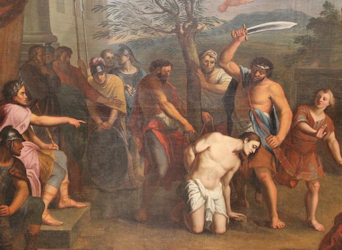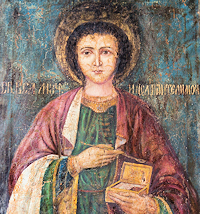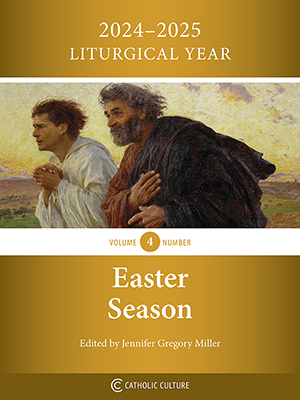Ordinary Time: July 27th
Friday of the Sixteenth Week of Ordinary Time
Other Commemorations: St. Pantaleon, Martyr (RM)
» Enjoy our Liturgical Seasons series of e-books!
St. Pantaleon, one of the Fourteen Holy Helpers, was a physician, who practiced without payment, and who was martyred under Diocletian. His cultus is primarily connected with Bithynia, where Emperor Justinian rebuilt his church at Nicomedia. Churches are dedicated to him in Constantinople and Rome. In the East he is known as the Great Martyr and Wonder Worker. A reputed relic of Pantaleon's blood kept at Ravello in southern Italy displays the phenomenon of liquefaction on his feast day, similar to that of Saint Januarius. Before the reform of the General Roman Calendar his feast was celebrated today.
St. Pantaleon
 He was a celebrated "fee-less physician" from Nicomedia who placed his skill in the service of God's kingdom! According to legend he was the emperor's ordinary physician. He is said to have strayed from the faith because of the voluptuous life at the court, but the zealous priest Hermolaus, by pointing out the example of his virtuous mother, effected such a change that Pantaleon distributed his goods among the poor and devoted his talents for healing to the most wretched and poor among the sick.
He was a celebrated "fee-less physician" from Nicomedia who placed his skill in the service of God's kingdom! According to legend he was the emperor's ordinary physician. He is said to have strayed from the faith because of the voluptuous life at the court, but the zealous priest Hermolaus, by pointing out the example of his virtuous mother, effected such a change that Pantaleon distributed his goods among the poor and devoted his talents for healing to the most wretched and poor among the sick.
Because of his Christian faith he was seized by order of Emperor Maximian, tied to the rack and scorched with torches. But in these tortures Christ appeared, granting him further strength. Finally a stroke of the sword ended his sufferings (Martyrology). He is the patron of physicians and belongs to the "Fourteen Holy Helpers."
—Excerpted from The Church's Year of Grace, Pius Parsch
Patronage: bachelors; consumption; doctors; midwives; physicians; torture victims; tuberculosis; protection of domestic animals.
Symbols and Representation: Budding olive branch or olive tree; vials of medicine; lion; club; sword and vase.
Highlights and Things to Do:
- Read more about St. Pantaleon:
- Watch this Youtube video on St. Pantaleon.
- Read St. Pantaleon: Patron Saint of Trousers and Lotteries.
- See Prayer to St. Pantaleon for Protection from any Illness.
- Read more about the Fourteen Holy Helpers.
- See Saint Pantaleon: The Iconography for images of St. Pataleon.






